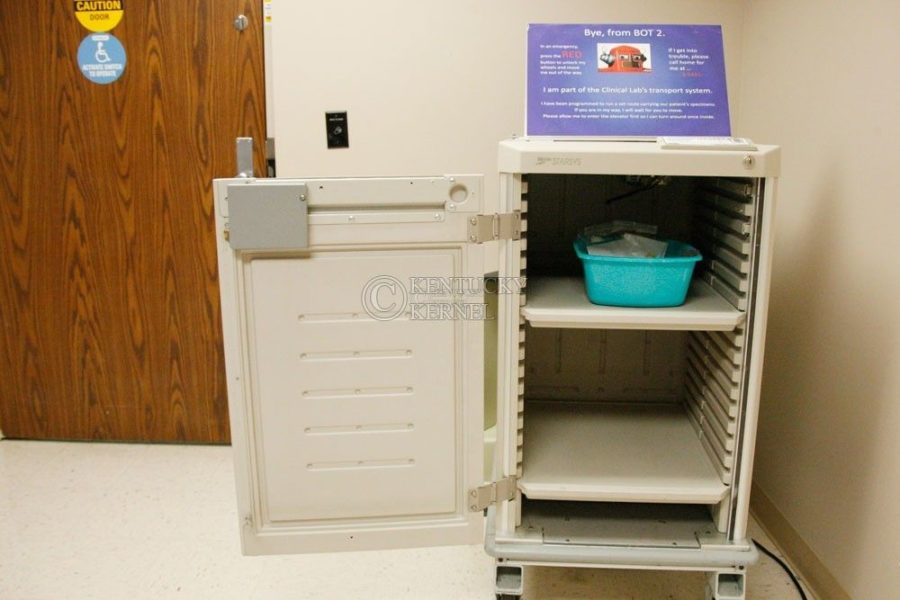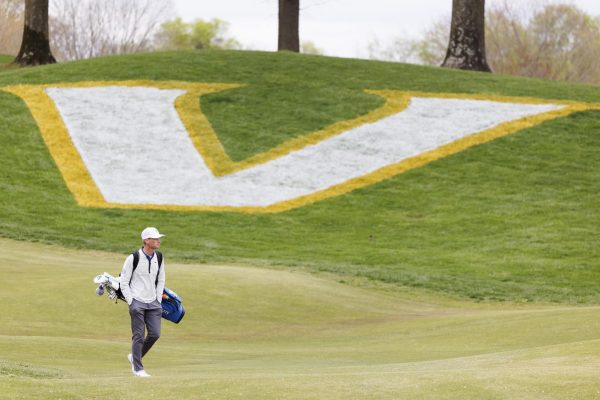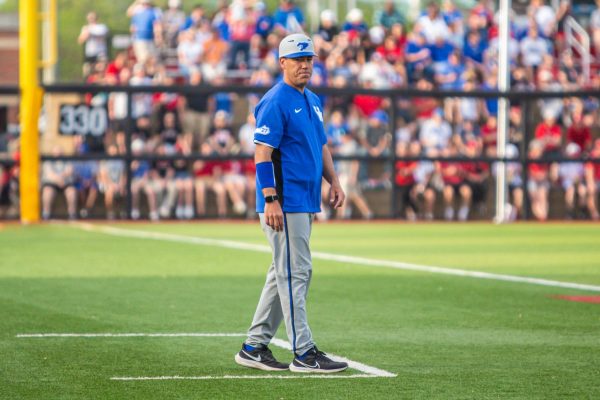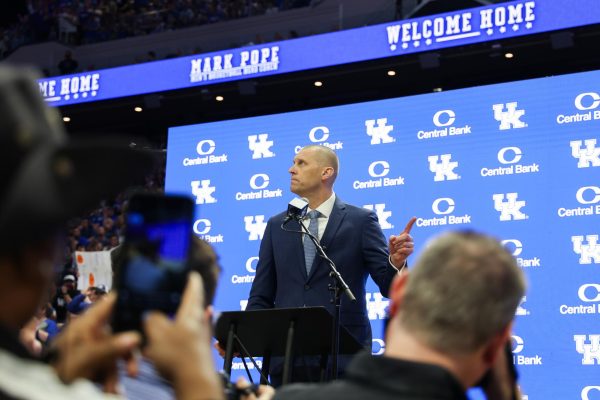Robots make rounds in UK Hospital
March 7, 2011
These robots won’t beat you at “Jeopardy!” but they might just beat you in a race across the hospital.
The Kentucky Clinic is now using two TUG robots to make deliveries across the hospital, traveling amidst the staff and patients within the hospital on their journies.
Two robots, named Bot 1 and Bot 2, deliver samples across the UK Chandler Hospital, from the clinic where they’re collected to the laboratory that they’re tested in.
“Everyone thinks they’re a floor sweeper or waxer or something,” Sherri Arnold, a lab technician at the Kentucky Clinic said.
The trip that the robots take is roughly 1/3 mile each way, and the robots take it 11 times a day, Pamela Lee-Miller, the Kentucky Clinic lab coordinator, said.
On their journies the robots remotely call elevators, open doors and travel across a bridge between the two facilities. The robots can speak to let people around know when they’re calling and entering elevators, or if they’ve become stuck.
Lee-Miller said the entire trip takes 20 to 40 minutes depending on foot traffic through the hospital. If the robots get stuck, the staff can activate a camera on the front to see what the problem is.
Peter Seiff, vice president of business development with Aethon, the company that supplies the robots, said that the robots can pull up to 1,000 pounds on a level surface, and their battery life allows them to run for six to eight hours before they need a full charge.
“I was very reluctant in the beginning, and now it frees me up to not have to look for staff who get distracted on their trips,” Lee-Miller said.
The robots are not replacing any employees in the lab, but are taking over a task that employees struggled to find time to do before, Arnold said.
“We’ve tried to hire temporary employees to do the running, and we’ve not had much success,” Lee-Miller said.
Lee-Miller said that the robots did take some getting used to. The clinic worked with a team to time them correctly, and now has a scheduler that automatically sends the bots at the start of every hour.
“If we have to go back to manual runs, it feels like we’ve stepped back into the ice age,” Lee-Miller said.
The UK Hospital only uses two of the robots for now, but the robots are becoming a common sight around hospitals. Around 150 hospitals use the robots now, with about 400 units in service, Seiff said.
Most hospitals that use the robots for lab applications have between two and four, but hospitals that used them for food and trash service have used up to 20 of the robots.
“Typically, our philosophy is robots are best utilized in areas that are dirty, dull and dangerous—as long as we stick to those things, there’s always an advantage to stick to robots,” Seiff said.
Seiff said the company is always refining the product to make it work better in the chaotic environment of the hospital. Even the voice had been changed to make it friendlier.
“It used to say ‘navigating around obstacle’ whenever it found something, or someone, to move around. We had to change it, because people were offended by being referred to as an obstacle,” Seiff aid.
Newer models of the TUG are able to dynamically switch platforms for their trips, allowing them to pull one type of cart, food trays, to their destination, and take a different type, like one that contains trash, to a different location.























































































































































